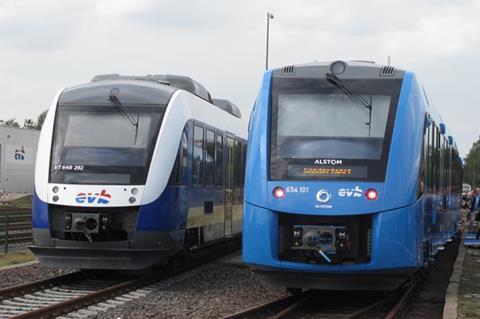Construction of a hydrogen train fuelling station is Bremervörde, Germany has begun. The station will serve a fleet of 14 Alstom Coradia iLint fuel cell multiple-units which Niedersachen transport authority LNVG has ordered for use by Eisenbahnen und Verkehrsbetriebe Elbe-Weser on passenger services between Cuxhaven, Bremerhaven, Bremervörde and Buxtehude from 2022. The hydrogen train fuelling station is going to be constructed by Linde, a gases and engineering company who has estimated the construction to be completed by mid-2021 to replace a mobile facility provided for the initial operation of two pre-series iLint units.
Also Read: Germany aims to increase offshore wind power capacity by 2040.
The station will have a capacity of nearly 1,600 kg of hydrogen each day which will enable 14 units to be refuelled every day, providing a range of 1,000 km which is usually all that is required for a full day of operation. This innovation is supposed to provide future expansion to hydrogen to be produced on-site using electrolysis and regenerated electricity.
The project is being subsidised by the Federal Ministry of Transport & Digital Infrastructure’s hydrogen and fuel cell innovation programme. NOW GmbH is coordinating the funding, with Project Management Jülich responsible for implementation. In November 2017 LNVG awarded Alstom a contract to supply a fleet of 14 Coradia iLint units along with the fuel and provide 30 years of maintenance at its Salzgitter site. Two iLint trainsets entered passenger service in September 2018, and the period of trial operation was formally completed in May.
Oil giant Shell and Dutch utility Eneco have won the tender to build a super-hybrid offshore wind farm in the Netherlands. It will consist of two sites located 11.5 miles (18.5 km) off the west coast, near the town of Egmond aan Zee. The Shell/Eneco consortium, CrossWind, will build the Hollandse Kust (noord) project. They will pair the offshore wind farms with floating solar facilities and short-duration batteries. It will also generate green hydrogen via an electrolyzer. Hollandse Kust (noord) is expected to be operational in 2023 with an installed capacity of 759 MW, generating at least 3.3 TWh per year.

